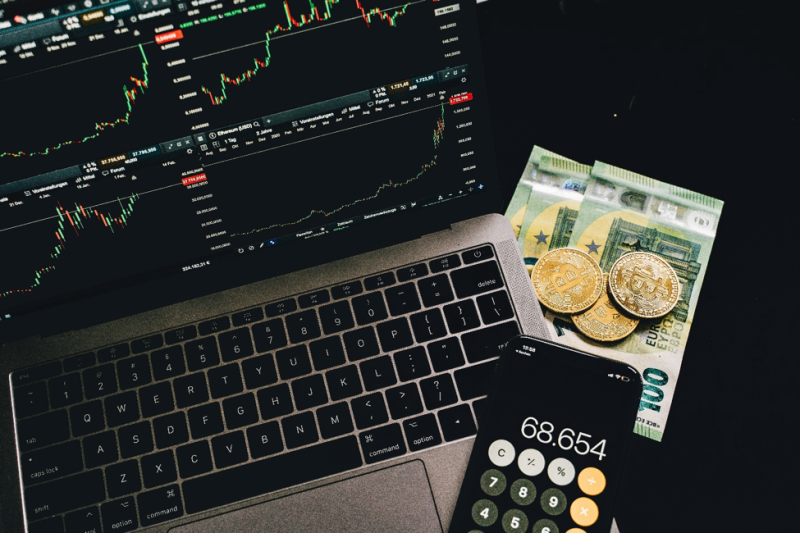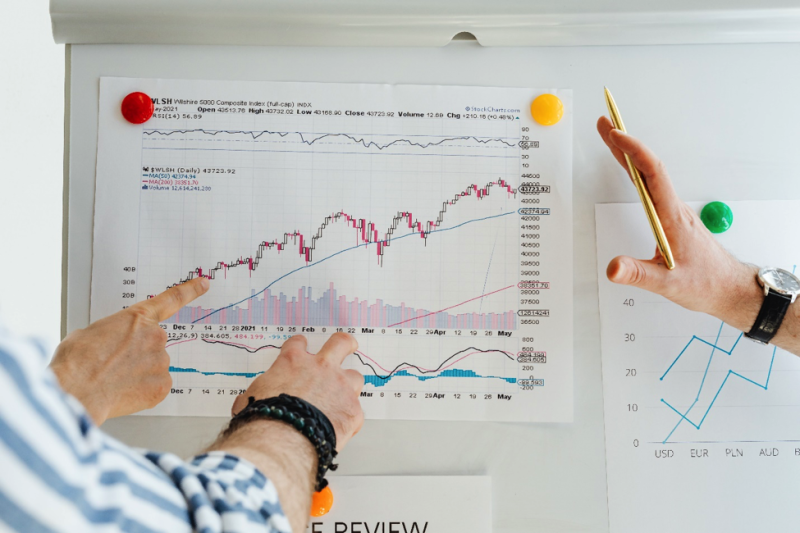
If you have participated in the foreign exchange market before, you may have come across the term ‘lot’. For new traders, if you have not, trust me, you will. It is one of the basic concepts in currency trading. In this article, we will explain what the term ‘lot' means in detail and how a lot size in forex is calculated. To make sure that you clearly understand what a lot is, we have included several illustrations and examples.
In addition to explaining what a lot in forex is, we have included some basic tips you need to know when deciding on what lot sizes to use as you are trading forex and how to calculate your profit or loss.
Also Read: The Best Forex Trading Tips
Contents
- What is a Lot?
- Understanding Lot Sizes
- How Does a Lot Size in Forex Affect Profit or Loss?
- What is the Best Lot Size to Use?
- Conclusion
- FAQs
What is a Lot?
The forex market is broad in that it facilitates the exchange of various world currencies. These currencies are exchanged in very large quantities. Participating in the forex market means that you are buying and selling different currencies in real-time. Since the market is global, the market participants come from all around the globe and more so from different financial classes – some are extremely wealthy while others are just average.
To accommodate participants from different financial classes and to make it convenient for traders to benefit from small market movements, there was the need for a standard unit of measure. This unit of measure would be universal to some extent and would help standardize currencies. This is where the concept of the forex trading lots originated.
A lot in forex is a standard unit of measure for any given currency. Simply put, it is a specific set amount of a certain currency.

Currencies are traded in currency pairs – the value of one currency compared to another currency. The first currency is referred to as the base currency while the second currency is referred to as the quote currency.
Mostly this value changes in very small proportions. We measure this price change in pips. Pip is an acronym for percentage interest point. For most pairs, pips are measured in the fourth decimal place, to allow for accurate measurement especially when the market makes a very small movement.
For this reason, it is impossible to trade on a single unit of a currency, hence the need for forex lots. Forex lots allow traders to benefit from these small market movements as they have traded ‘several units of currency’ or in other words, a lot.
Usually, forex lot values are determined by forex exchanges, local law or other market regulators. This helps ensure that every market participant understands the lot size and how many units of currency it represents.
Understanding Lot Sizes
To help measure different sizes, there are four main lot sizes. These include:
· Standard Lot
· Mini Lot
· Micro Lot
· Nano Lot
|
Lot Size |
Units |
Volume |
$/pip |
|
Standard |
100,000 |
1.00 |
$10.0 |
|
Mini |
10,000 |
0.1 |
$1.0 |
|
Micro |
1,000 |
0.01 |
$0.1 |
|
Nano |
100 |
0.001 |
$0.01 |
Traditionally these were the only available lot sizes for traders. However, currently and thanks to progressive trading technologies there can be a lot more as traders can now create custom lot sizes.
To make it clear and easy for you to grasp what a lot size is and its relation to pip value is, we have used GBP/USD for all our illustrations.
1. Standard Lot
The standard lot is equivalent to 100,000 units of currency. So, anytime you hear or read about a standard lot interpret this as 100,000 units of the currency in question. It is used by all types of forex traders; either institutional or retail.
The standard lot is the most common type of lot among many brokers. This is because a good number of professional traders run consistent retail investor accounts at $100, 000 or close to.
While trading on the GBP/USD pair, assuming that the exchange rate is $1.5000. This rate is in USD because it is the quote currency for the above currency pair. With the value of one lot being 100, 000 units then one lot of GBP/USD is equal to 150,000 units of the US Dollar. In this case, you would need 150, 000 units of the US Dollar to purchase 100, 000 units of the Pound Sterling.
While trading using the standard lot, one pip movement represents $10 of your account. In the case that the market moves 20 pips in favor of your trade, after crossing your order, this means that you have made a profit of $200 and vice versa.
2. Mini Lot
A mini forex lot is equivalent to 10, 000 currency units. This is one-tenth of the standard lot. It is common with average-day traders who prefer to use a small amount of leverage or none at all. While using the mini lot a single pip movement represents $1 of your total account size.
While the word mini may make the lot size sound small, this is not the case. Mini lots are considered on the upper side of lot sizes, especially considering that the market may move several hundred pips in a single day.
While trading the GBP/USD pair, assuming the exchange rate is $1.5000, a mini lot would represent 10, 000 units if the US Dollar. This means that you would need 15, 000 units of the US Dollar to purchase 10, 000 units of the Pound Sterling.
3. Micro Lot
A micro lot is equivalent to 1000 units of any given currency. It is one-tenth the size of a mini lot. It is important to note that not all brokers offer micro lots because of their size and value. It is mostly preferred by investors who are just beginning their trading journey. This is because it enables them to participate in the markets with a smaller-sized investment account.
While trading using the micro-lot, 1 pip movement represents $0.1. This means that if the market moves 20 pips in any direction, your account will change in size by $20.
While trading the GBP/USD currency pair, assuming that the exchange rate is $1.5000, a micro lot would represent 1000 currency units if the US Dollar. This means that you would need 1,500 units of the US Dollar to purchase 1000 units of the Pound Sterling.
4. Nano Lot
A nano lot is the smallest sized lot available. It is equivalent to 100 currency units. While it offers a little margin for profit it is still very popular among most new traders as they get to understand the markets with very small accounts.
While trading using the nano lot size, 1 pip movement represents $0.01. This means that if the market moves 20 pips in any direction, your account will change in size by $2.
While trading the GBP/USD pair, again assuming that the exchange rate is $1.5000, a nano lot would represent 100 units of the US Dollar. This means that you would need 150 units of the US Dollar to purchase 100 units of the Pound Sterling.
How Does a Lot Size in Forex Affect Profit or Loss?
Understanding how a lot in forex trading influences your trading strategy and trade size is crucial for every trader out there. Experienced forex traders know how to adjust their lot sizes accordingly to maximize profits and minimize their losses.

Pip value per lot size
Pip values per lot size are crucial to calculating your profit or loss. It helps us calculate how much money we are making or losing for each pip movement. It takes into consideration the currency value (number of currency units) you are trading with.
It is important to note that the pip value per lot size is always expressed in the base currency of whichever currency pair you are trading. For instance, if you are trading the EUR/USD the pip value per lot size would automatically be in USD.
The pip value per lot size formula is:
Pip Value=((1 pip)/(Exchange Rate))×Lot Size
- Assuming you are trading EUR/USD and the EURUSD exchange rate is 1.1300 USD. 1 pip for the, in this case, is 0.0001.
- Assume you are trading mini lots for the above illustration.
- Note that EUR is our base currency and USD is our quote currency.
To calculate pip value:
Pip Value=((0.0001)/(1.1300))×10,000
Therefore, the pip value is 0.88 Euros as it is our base currency. To convert this into USD all you need to do is to multiply the pip value by the current exchange rate, which in this case is 1.1300.
This means that for every pip movement you would be making or losing $1.
Kindly note that if the base currency is in USD, then there is no need to convert using the exchange rate. However, if the base currency is not the US Dollar, you must convert it to get the pip value in USD dollars.
For example, if you are trading USD/JPY you would need to convert the pip value from the Japanese Yen to get the amount in US Dollars.
Also Read: 50 Pips a Day Forex Strategy
What is the Best Lot Size to Use?

Evaluating what lot size to use is completely up to you and will depend on your trading strategy, risk management, and trading platform. For example, day traders prefer using mini lots while long-time swing traders prefer using the standard forex lot. This is majorly influenced by the investment objectives between the two.
Retail traders who use cent accounts prefer to use the nano or micro lots to take advantage of the leverage offered by brokers. Leverage is the amount that brokers offer you to trade with after depositing with them. It allows you to enter currency trades with more money than you have in your account.
The key takeaway is, the greater your lot size the more the amount you need as you trade forex. A larger forex lot has a high risk while a smaller lot has a lower risk. Regardless of currency pairs, a larger lot size means you are trading with more currency units.
Conclusion
From the above outline, forex lots can be said to be influenced by, your trading account, choice of forex broker, trade sizes (preferred position size). Use these factors to choose the right lot in forex trading as it could be the determining factor of whether you make profits or losses.
To better understand how lot sizes work, it is advisable to first use a demo account or a nano account. This will ensure you do not end up losing money rapidly to the forex markets. Risk management is crucial to your success or failure as a trader.
Please note that the information presented in this article is not an investment advice in any way but is meant to educate traders especially if they are about to start trading.
FAQs
What is the most popular lot size?
Many traders trade using mini and micro-lots. These particular lots allow for proper risk management and fall within the account sizes of a majority of forex traders.
The standard lot size is considered high risk and therefore not as common among average traders. Nano lots on the other hand are too small and are therefore not applicable for traders who have made a significant investment in the market.
Does the account size influence lot sizes?
Yes, the remaining cash balance in your forex account directly influences the choice of lot size. A smaller balance would mean you need more leverage to trade many units of currency. In this case, it is preferable to use a micro lot compared to a standard lot.
















